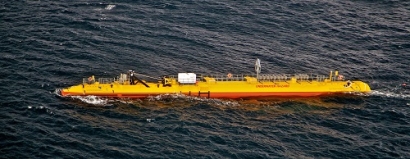
In 12 months of continuous operation, including during the worst winter storms in recent years, the pioneering SR2000 – the world’s most powerful operating tidal stream turbine - has supplied the equivalent annual electricity demand of around 830 UK households and at times has been supplying over 25 percent of the electricity demand of the Orkney Islands.
Underlining the significance of the company’s achievement, and its contribution to the progress of the tidal industry, the 3GWh generated by the SR2000 over the past 12 months is more power than that generated by the entire wave and tidal energy sectors in Scotland in the twelve years prior to the launch of the SR2000 in 2016.
The team at Scotrenewables believes that this, combined with Meygen’s generation of over 8GWh over the past year from four tidal turbines deployed in the Pentland Firth, is convincing evidence of tidal power’s market readiness.
Andrew Scott, Chief Executive Officer of Scotrenewables Tidal Power, said, “The SR2000’s phenomenal performance has set a new benchmark for the tidal industry. Despite being an R&D project, and it being our first full scale turbine, its first year of testing has delivered a performance level approaching that of widely deployed mature renewable technologies”.
With support from the EU’s Horizon 2020 scheme, Scotrenewables Tidal Power is planning to start the build of a 2MW commercial production unit later in the year which will also go to Orkney for testing before the company targets sales of the turbine.
Scott added, “The SR2000 has completed the job of demonstrating that we have a breakthrough technology and we will now be shifting all our focus and resources towards building on that success with a product which we are confident can enable a new industry created around a predictable renewable energy source.”
Commenting on UK government policy, Scott said, “We are dismayed that there is a total lack of market support here in the UK for our technology, and we have no option but to focus our business on overseas opportunities.”

